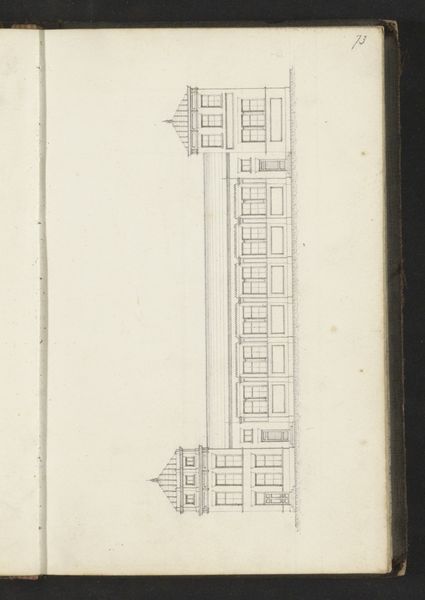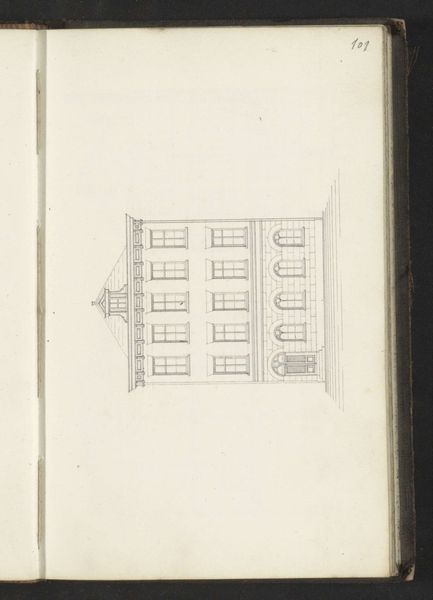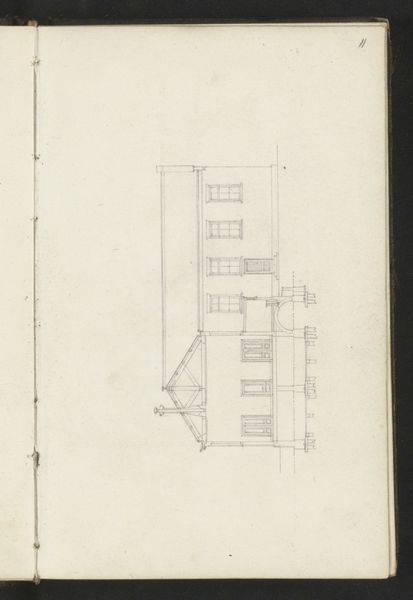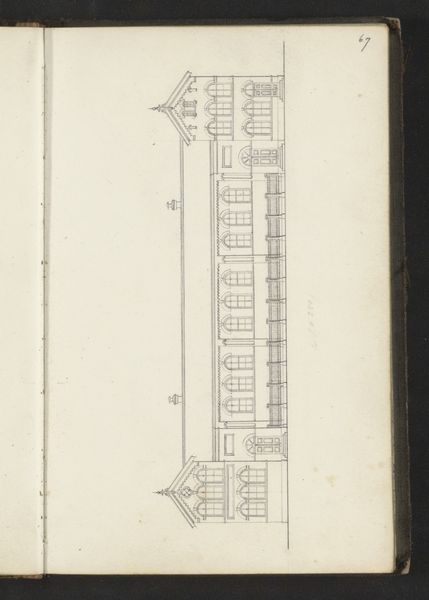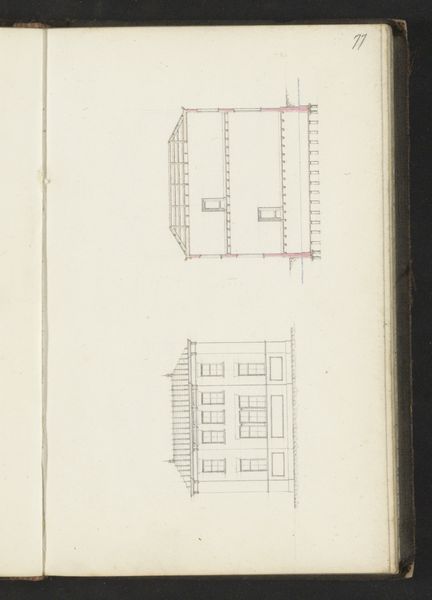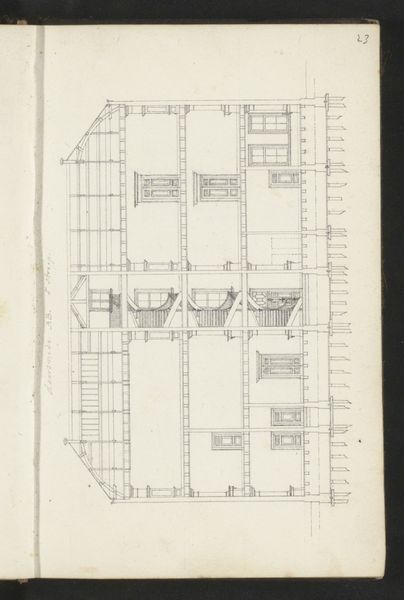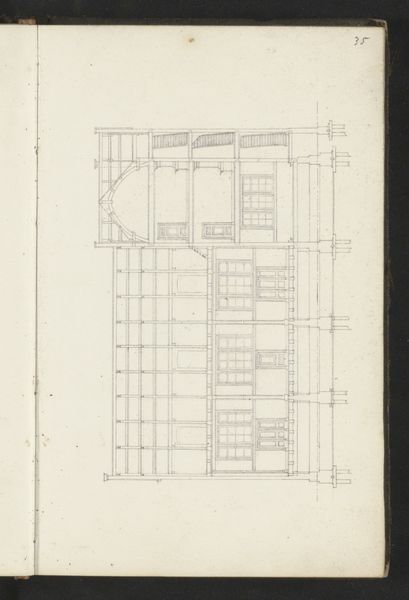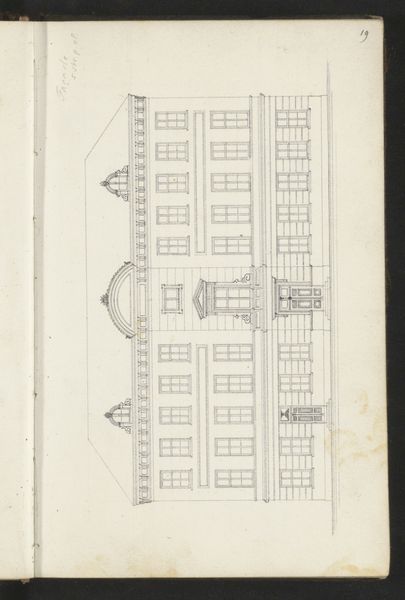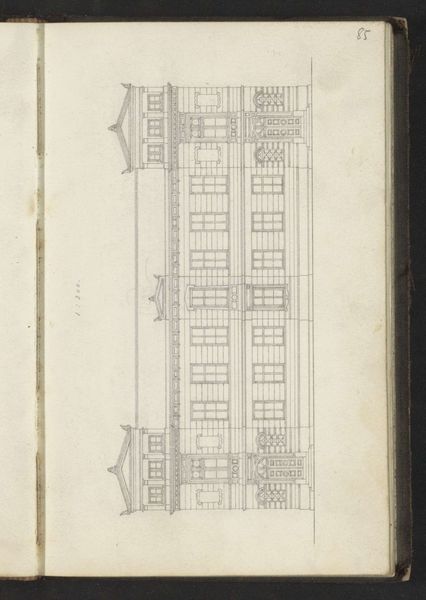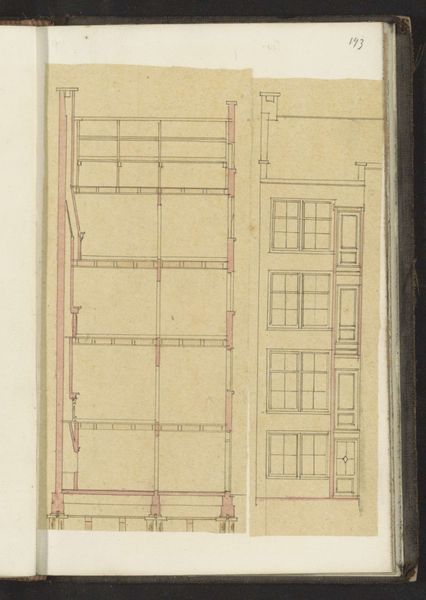
drawing, paper, pencil, architecture
#
drawing
#
aged paper
#
homemade paper
#
script typography
#
sketch book
#
hand drawn type
#
landscape
#
paper
#
personal sketchbook
#
hand-drawn typeface
#
pen-ink sketch
#
pencil
#
sketchbook drawing
#
academic-art
#
sketchbook art
#
architecture
#
realism
#
building
Copyright: Rijks Museum: Open Domain
This is Willem Springer Jr.’s architectural drawing of the facade of a school for the poor. The drawing’s formal structure, with its precise lines and balanced composition, creates a sense of order and rationality, yet also a lack of depth, almost flattening the image. The facade is presented frontally, emphasizing its surface. The symmetry in the windows and architectural details suggests an attempt to impose a formal structure onto a building meant for the impoverished, creating a subtle tension. The artist may be hinting at societal norms through the semiotics of architectural representation, revealing underlying structures of power and control. The facade becomes a signifier, communicating societal attitudes toward poverty and order, an outward display of social ideals imposed on the vulnerable. Consider how these formal choices reflect the complex discourse between aesthetics, function, and social commentary, leaving us to question how design reflects and shapes our understanding of societal structures.
Comments
No comments
Be the first to comment and join the conversation on the ultimate creative platform.
